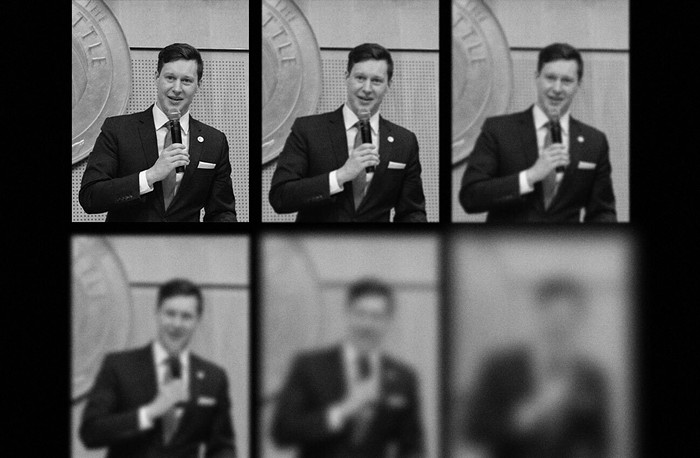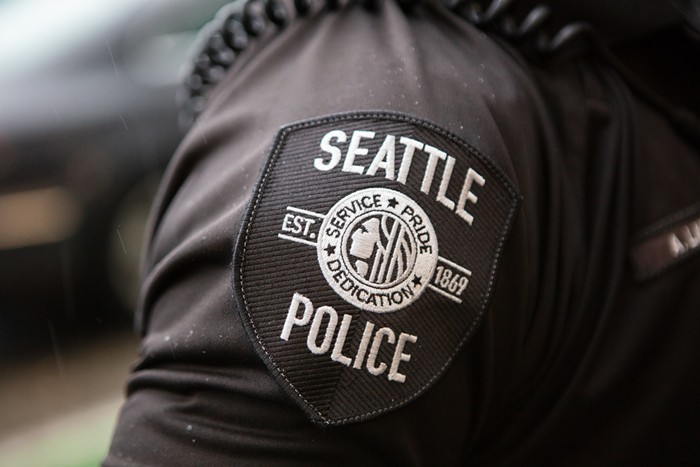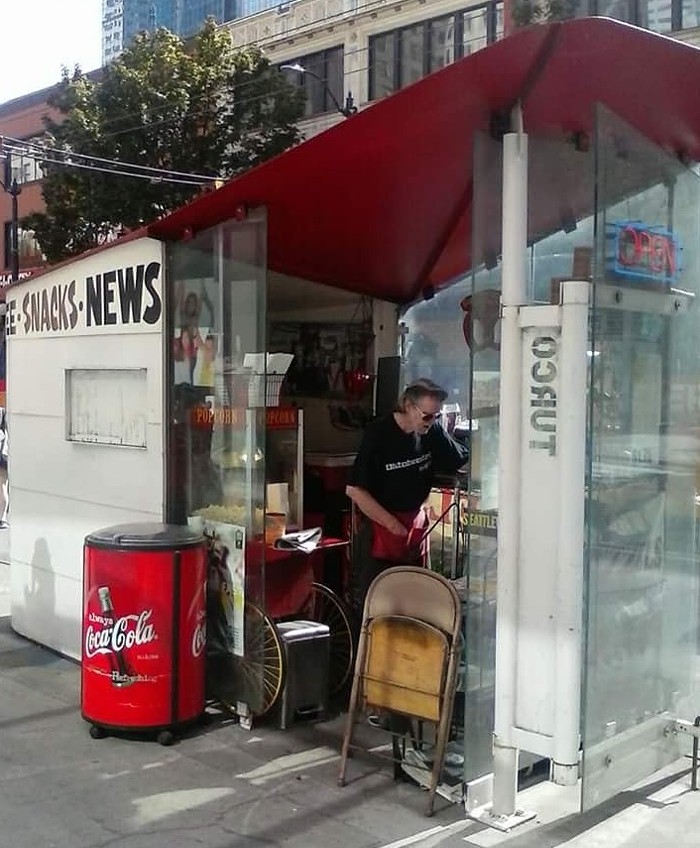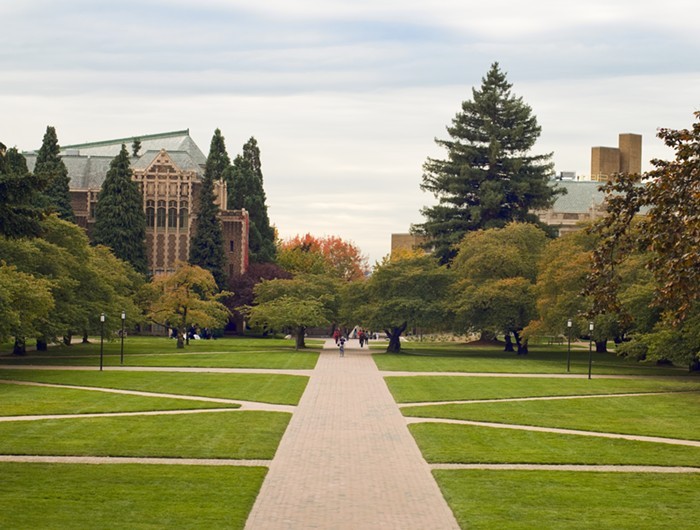Four lanes of traffic currently run along Northeast 125th Street through the Lake City neighborhood. On average, vehicles drive 12 miles per hour over the posted speed limit, according to the Seattle Department of Transportation (SDOT), which results in more wrecks with higher injury rates than on similarly sized streets in the city. SDOT's research shows that on most streets this size, 31 percent of accidents result in injuries; on 125th Street, 51 percent of the accidents result in injuries. The arterial also lacks bike lanes, and pedestrians tend to divert to side streets—streets without sidewalks—rather than use the sidewalks on 125th Street.
It's a dangerous street.
"We've had speeding, collision, and pedestrian-crossing issues," says SDOT planner Sam Woods, the lead planner for proposed changes on 125th Street. "These are real dangers for people."
So the city is proposing a so-called "road diet" for 125th Street, which would reduce the four lanes down to two lanes with a center turn lane, flanked by two bike lanes. SDOT officials say the changes will reduce traffic speeds and make the street safer for everyone.
You might expect residents to embrace the plan. The city has completed 26 similar projects since 1962, including on highly trafficked corridors like Nickerson Street, Stone Way, and Fauntleroy Way. "Our study results of Stone Way show that vehicle speeds are lower and crashes are down significantly," says SDOT spokesman Rick Sheridan.
But area residents aren't happy. A movement is mounting in North Seattle to argue that the changes will create traffic jams and actually cause unsafe conditions, and they're bombarding SDOT with letters protesting the changes.
Flyers distributed to doorsteps and left at businesses charge that reducing lanes "will create major traffic congestion between I-5 and Lake City Way." The flyers also say that the changes won't reduce traffic speeds or encourage bicycles to use the thoroughfare.
"It'll cause more accidents," says Karen McGough, who lives in a cul-de-sac off of 125th Street. McGough envisions buses mowing down cyclists in the new bike lanes, cars cutting into the turning lane to pass buses, residents unable to turn out of their cul-de-sacs, and traffic jams everywhere. "These are dangerous changes," she says.
Some business leaders agree: "We have grave concerns about the large changes being forced on the neighborhood and are opposing the project at this time," says Peter Lukevich, president of the Lake City Chamber of Commerce.
However, SDOT's Woods refutes those arguments, noting the success of similar projects in the past and statistics that show the neighbors are wrong about traffic.
The maximum capacity for a two-lane road with a central turn lane—e.g., Northeast 125th Street on a road diet—is 22,000 to 24,000 cars daily, according to SDOT. Currently, roughly 16,200 vehicles use the street each day. So 125th Street wouldn't be nearing its capacity on the road diet, making the specter of traffic jams appear unfounded.
As for safety, the numbers are in: After Stone Way's road diet, speeds decreased and total collisions dropped 14 percent, with pedestrian collisions dropping 80 percent. Bike trips along the corridor increased 35 percent, while bike collisions declined. Woods adds, "Our primary goal is improving safety."
The outcry seems less about traffic jams and safety than about trying to preserve the road's current car capacity.
Meanwhile, other neighborhoods are embracing road diets. Rob Fellows, a former transit planner, and his neighbors are expecting a similar program on Greenwood Avenue North. They welcome the changes as a chance to make their business district less "auto dominated," Fellows says. "A lot more work is needed to get the kind of street Greenwood deserves—one that's comfortable to walk and shop in. But calming the street down is a necessary first step in the right direction."
Lake City resident Dave Morris agrees. He lives at the cross street of Northeast 125th Street and 25th Avenue and estimates that 12 accidents occur annually in front of his house. Commonly, two cars are making left turns from the inside lanes, effectively blocking each other's vision of what's happening in the outside lanes of oncoming traffic. As the cars turn, they're struck by drivers in these lanes. The proposed turning lane will help solve this problem. And as traffic slows down, 125th will finally become a street that pedestrians feel comfortable using. (As it stands now, with a well-documented speeding problem, pedestrians take 127th instead, a street without a sidewalk, he says. "Pedestrians are in the street with traffic, and it's because people just don't feel safe on 125th.")
The comment period for the proposed 125th Street road diet has ended. SDOT plans to consider residents' concerns before moving forward. However, this debate will likely persist throughout Seattle into the foreseeable future, as SDOT invests in more projects that support walking, biking, and riding transit. (SDOT plans to install 20 miles of new bike lanes in 2010 alone.)
For now, McGough says Lake City residents are considering a referendum if SDOT won't back down. "I know people are up in arms" all over the city, McGough says, "about what is happening to their streets." ![]()



















